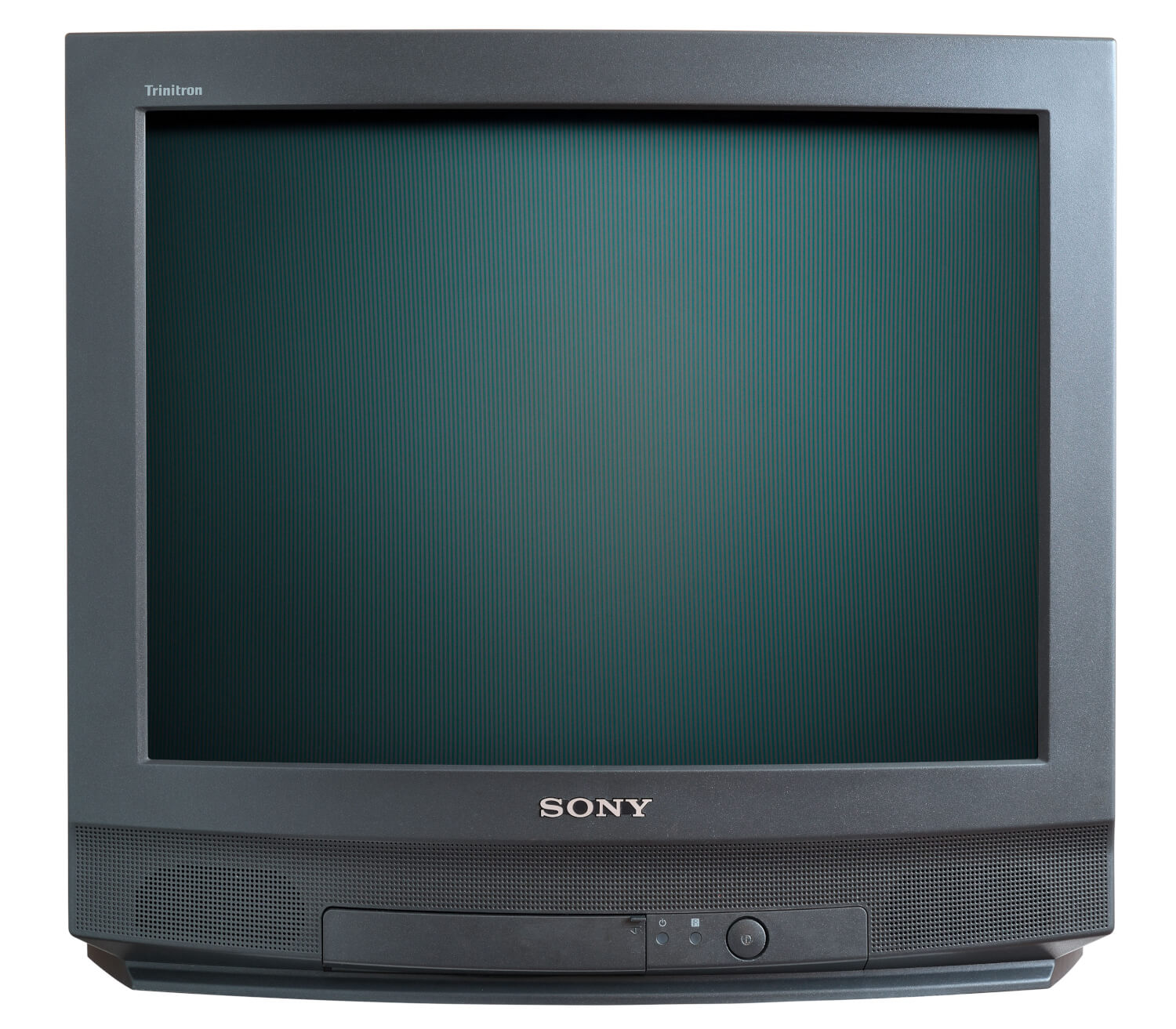Trinitron
Trinitron was a pioneering CRT (Cathode Ray Tube) technology developed by Sony Corporation. Unlike conventional CRTs that use a shadow mask, Trinitron utilized an aperture grille.
A shadow mask is a metal plate with tiny holes that guide electron beams to specific phosphors on the screen, creating an image. In contrast, an aperture grille consists of vertical wires that allow for a vertically flat screen and produce brighter, more vibrant images with accurate color reproduction. Since Trinitron monitors had vertically flat screens, they had less image distortion and glare than other models.
The Trinitron technology quickly became synonymous with high-quality display performance. One of its distinguishing features was the presence of thin horizontal support wires, visible upon close inspection, that stabilized the aperture grille. These wires helped maintain screen integrity, contributing to the display’s superior image quality.
Sony's proprietary Trinitron technology allowed the company to lead the television and monitor market for many years. Trinitron displays set a new standard for CRT performance, offering unparalleled clarity and brightness until the widespread adoption of flat-panel display technologies in the 2000s. Now, most televisions and monitors have LCD or OLED screens.

 Test Your Knowledge
Test Your Knowledge